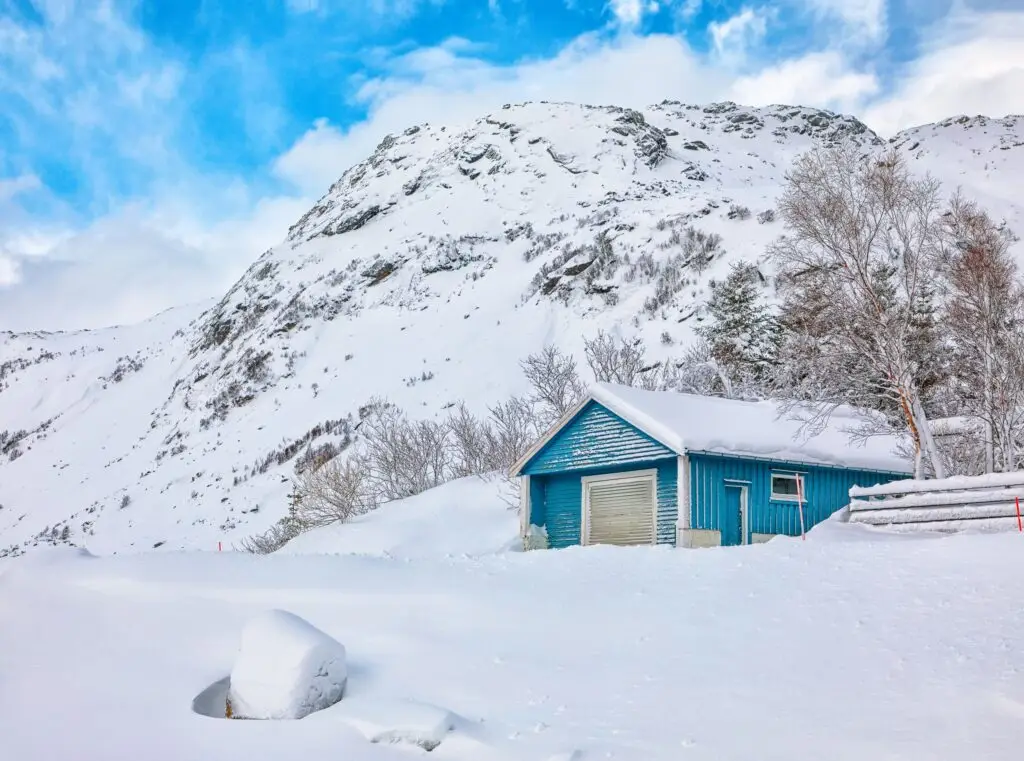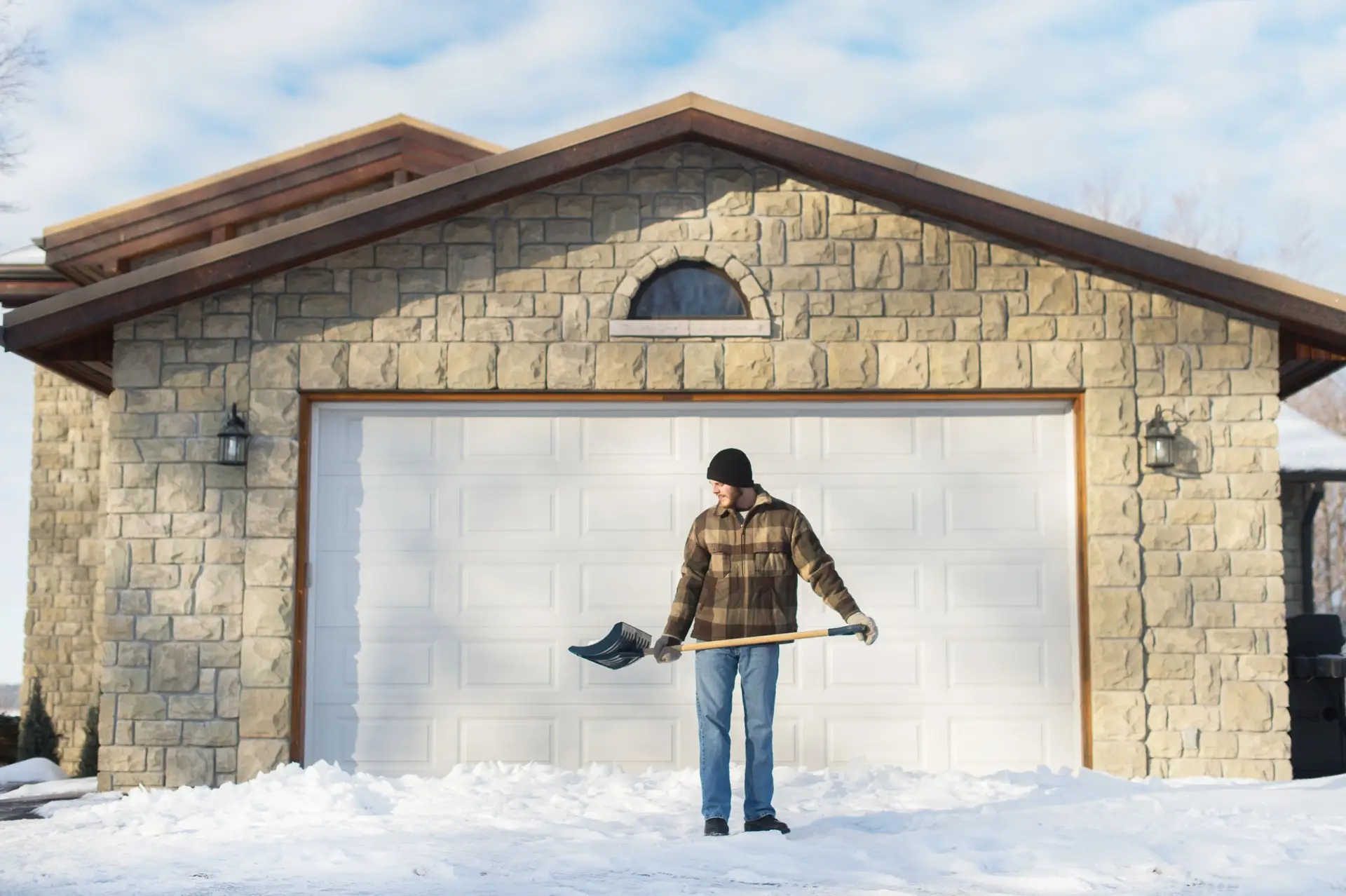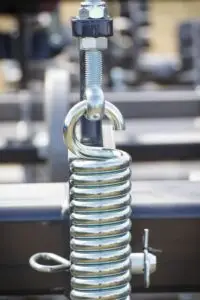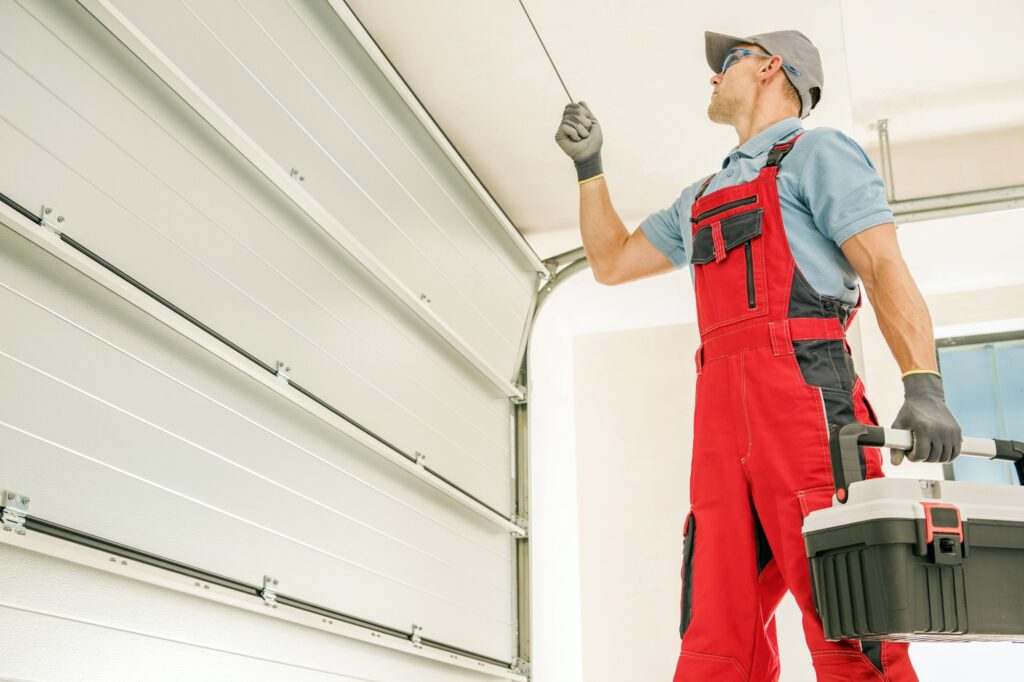Winter in Katy, TX, might not be the same as Minnesota’s ice storms, but when that occasional cold front rolls through, your garage door can suddenly turn stubborn. One moment, it’s working fine—and the next, you’re stuck in your driveway yelling at a frozen chunk of metal that won’t budge. If you’ve ever muttered “garage door repair near me” through clenched teeth in 30-degree weather, this one’s for you.
At Houston Garage Door Repair, we’ve seen firsthand how unpredictable weather and worn-out parts collide in the worst ways. So, let’s walk through the common culprits of garage door freezing issues, how to fix them without making things worse, and—most importantly—how to stop it from happening again.
Why Your Garage Door Freezes in the First Place
Let’s start with a bit of truth: most garage doors aren’t built to take on ice unless you’ve taken a few weatherproofing precautions. Katy may not get blizzards, but the mix of cold air, high humidity, and just a splash of rain is all it takes for a temperature-sensitive garage door to lock up tight.
Common Causes of Cold-Weather Malfunctions:
- Icy Garage Rails: Even a thin layer of ice on the tracks can stop rollers in their tracks (literally).
- Lubricant Freezing: Grease that works great in the summer can thicken in the cold, jamming the rollers.
- Swollen or Frozen Seals: Water expands as it freezes. If that water gets into your bottom seal, you’ve got a gluey mess.
- Sensor Confusion: Frost or condensation can fog up the sensors, triggering safety features that prevent your door from moving.
You don’t have to be a garage door tech to troubleshoot these—but knowing what to look for (and when to call in the pros) can save you a world of stress.
Quick Troubleshooting: How to Handle a Frozen or Stuck Garage Door

So you push the button, and nothing happens. You’re late for work. It’s cold. The coffee’s already cold. Time to act fast, but smart.
Step 1: Don’t Force It
We know—it’s tempting. But yanking a stuck garage door open could bend tracks, break springs, or crack panels. If the door won’t move, stop trying before it gets worse.
Step 2: Check the Seals and Bottom Track
Grab a flashlight. Look at the base of the door. Is it iced to the ground? Pouring a bit of warm (not hot!) water along the bottom seal can help loosen a frozen garage door without causing thermal shock.
Step 3: Inspect the Tracks and Rollers
If ice is lining the rails, use a hair dryer or heat gun on low to slowly melt the blockage. Avoid open flames—this isn’t a DIY barbecue.
Step 4: Try the Manual Release
Pulling the red emergency cord disengages the opener. If the door lifts manually, you know it’s a garage door opener or sensor issue—not a mechanical jam.
Cold Weather Garage Door Problems That Need Professional Help
If none of the steps above work, or you notice any of the following signs, it’s time to call a garage door repair technician in Katy:
- Loud grinding sounds even after melting ice
- Door rises unevenly or slams shut
- Opener motor runs, but the door doesn’t move
- Sensors blink but don’t align
- Seals are cracked or warped
These are usually signs of thermal garage failure in deeper components—like the torsion springs or motor gears.
How to Prevent Freezing Garage Doors in the Future
Sure, you could cross your fingers and hope Katy stays warm. But we like the “plan ahead” route better. Here’s how to keep your garage door winter-ready:
✅ Schedule a Garage Door Insulation Check
Insulated doors retain warmth and block moisture. If your door’s a thin metal sheet, consider an upgrade—or at least an insulation kit.
✅ Use Cold-Weather Lubricants
Standard lubricants can freeze or thicken. Switch to a silicone-based spray designed for cold climate garage repair conditions.
✅ Weatherproof Your Bottom Seal
Installing a newer rubber seal helps keep out water before it can freeze and create a sticky situation.
✅ Inspect and Test Sensors
Check alignment regularly and clean lenses during the winter. A little fog or frost can cause huge operational issues.
✅ Routine Winter Garage Door Troubleshooting
When winter approaches, do a quick garage door inspection for gaps, brittle seals, and slow starts. A frozen garage door fix is way easier when you’re not in a rush.
Why Fast Action Matters in Katy’s Winter Spells
We may not have snow days on the regular, but Katy weather can swing 30 degrees in 24 hours. One minute, it’s raining—next, you’re dealing with icy garage rails. Taking a proactive approach keeps your family, your vehicle, and your schedule running smoothly.
And don’t forget—failing to address these minor cold-weather malfunctions can create long-term issues like:
- Rust and corrosion from trapped moisture
- Worn-out springs due to uneven pressure
- Motor overuse from false starts
- Sensor failure due to repeated condensation damage
❄️ Don’t Let Your Garage Door Freeze You Out—Call Today!

When the weather takes a turn, your garage door doesn’t need to turn into a drama queen. With proper maintenance, smart fixes, and a quick call to a professional, you can keep your garage door smooth, quiet, and ice-free—even during the weirdest Texas cold snaps.
If your garage is already misbehaving in the cold, don’t wait. Reach out to Houston Garage Door Repair for fast, efficient help. We’re here to troubleshoot and fix your cold-weather garage door problems so your winter mornings can start off stress-free.
FAQ: Winter Garage Door Woes in Katy
Why does a garage door only freeze during certain mornings?
Temperature swings in Katy mean overnight condensation, which often freezes before sunrise. If the temperature dips below freezing at night and your garage lacks proper insulation, that thin layer of moisture on tracks or seals becomes an icy trap by morning. Insulation and seal upgrades can minimize this.
Is it safe to use salt to melt ice around the garage door?
Not really. Salt can corrode metal parts and damage concrete surfaces over time. If you must use a de-icer, opt for a garage-safe product like calcium magnesium acetate. Warm water, a plastic scraper, or a blow dryer is generally safer and more garage-friendly.
Can you still use your opener if the door is partially frozen?
We don’t recommend it. Forcing your opener to lift a partially stuck door puts unnecessary strain on the motor and gears. If the garage door opener continues to push against resistance, it may overheat or cause misalignment. Always disengage manually and inspect before using the opener again.
🔗 Craving More Tips? Don’t Miss This One…
➡️ Check out our next must-read: “Katy Garage Door Repair Myths That Might Be Costing You Money“
Learn the most common misconceptions that could be draining your wallet faster than a faulty remote!






